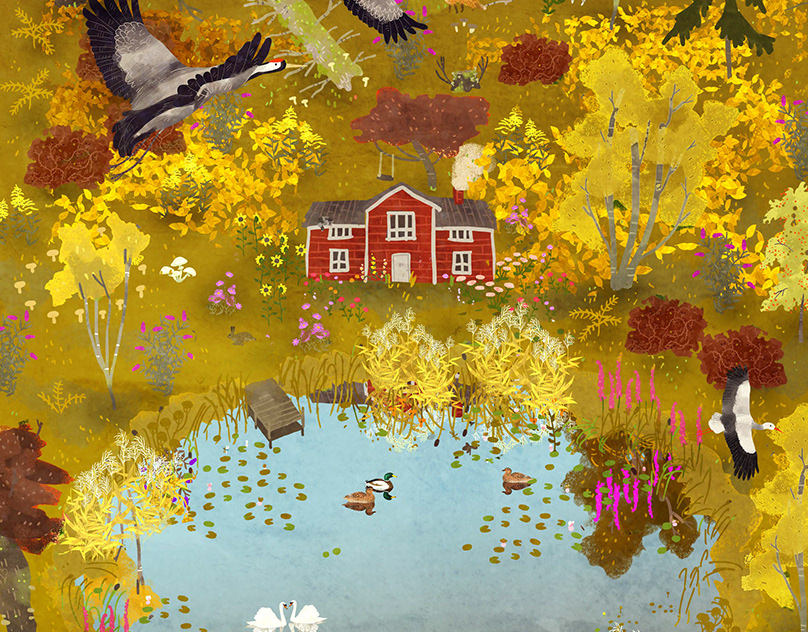&&float
New Media Installation Art for the IIJS Signature Goa 2010.
New Media Installation Art for the IIJS Signature Goa 2010.
Introduction
The IIJS Signature Goa is a jewellery exhibition held by the Gemsand Jewellery Export Promotion Council (GJEPC), Govt. of India. The&&float team had two installations for the four day event held inFebruary 2010 at the famous Kala Academy on the banks of the Mandovi River,Panaji, Goa.
The Installations
There were a number of different variations experienced throughthe installations. These could be divided into the following categories:
The Prototype
This was part of a class room project to develop interactive content. When people enter the projection area, the system tracks motion and generates real-time art/graphic, which is projected onto a wall. The intention of this installation is to create a dynamic visual experience within the space.
Team: Siddharth Mankad, Sunil Vallu, Aashka Shah
Hardware: DLP Projectors, Wide angle Webcams, HP Workstations
Software: Built with Processing 1.0 (processing.org)
Credits: s373.net, Ricard Marxer, Caligraft, Daniel Shiffman, Erik Natzke, James Alliban, Ken Perlin
Music: Distance disappears | 3:39 | Bobby & Blumm | Everybody Loves
Guide: Jignesh Khakhar
On Site Installation at the Kala Academy, Panaji, Goa.
Branding
The branding installation was a dedicated wall projection that displayed theIIJS Signature Goa branding using particles. As people passed in front of theinstallation, the particles would scatter and would regroup once the motion hadceased.
The branding installation was a dedicated wall projection that displayed theIIJS Signature Goa branding using particles. As people passed in front of theinstallation, the particles would scatter and would regroup once the motion hadceased.
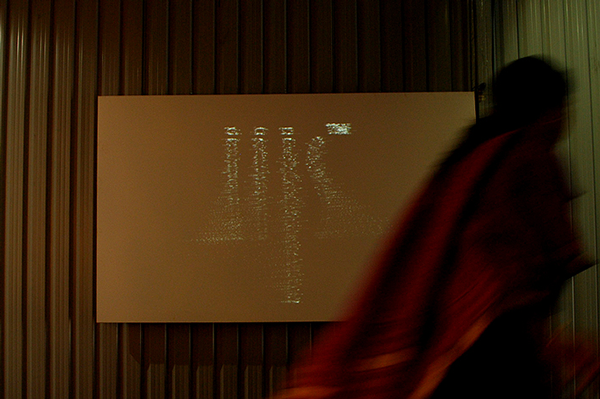
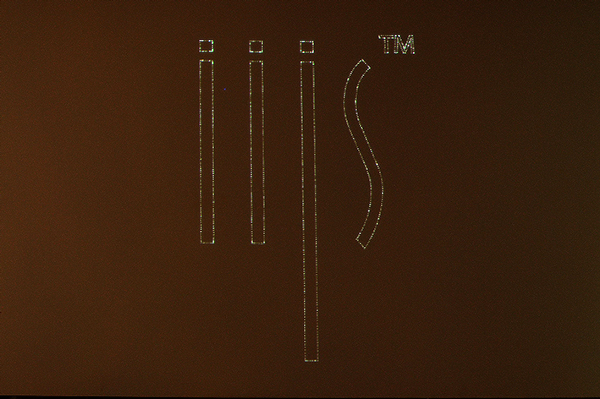
Tessellations
The second installation consisted also of a wall projection, but had a numberof variations across the four days of the exhibition. The first kind of thesevariations were tesselations. The motion in front of the wall caused generationof interesting patterns in sync with the motion.
The second installation consisted also of a wall projection, but had a numberof variations across the four days of the exhibition. The first kind of thesevariations were tesselations. The motion in front of the wall caused generationof interesting patterns in sync with the motion.
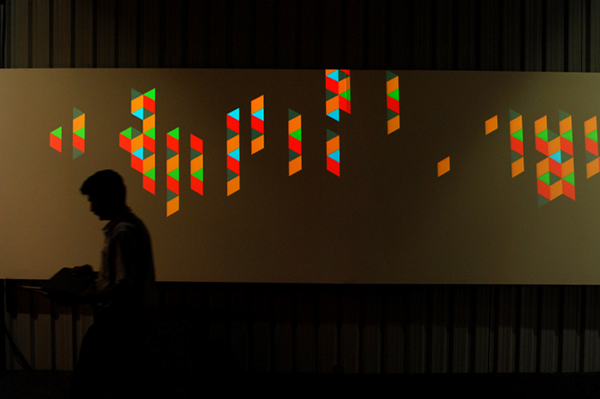
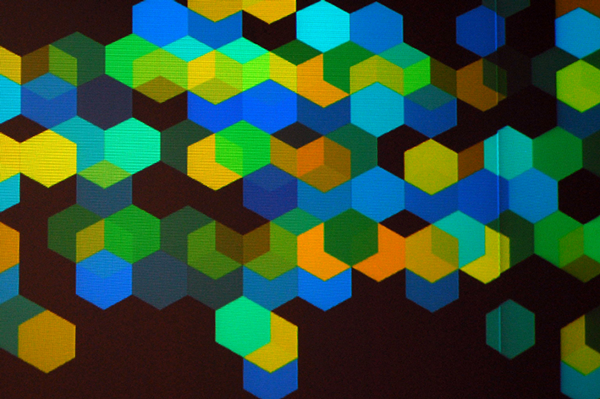
Dynamic abstraction
The second kind was the form of abstract expressions. Art in the form ofsplashes of color in tandem with the motion in front of the wall was aprominent feature of this variant.
The second kind was the form of abstract expressions. Art in the form ofsplashes of color in tandem with the motion in front of the wall was aprominent feature of this variant.


The Technology
The technology used in creation and working of these installationswas very simple. A webcam was used to track motion in the case of each of thetwo projection walls. The walls themselves were canvas screens onto which highintensity projectors drew the imagery. The software back-end consisted of theopen-source Java powered platform called Processing.
Conclusion
All in all, these installations worked on the principles ofinteractions of humans with the machine in form of motion with the output beingthe visuals.
The technology used in creation and working of these installationswas very simple. A webcam was used to track motion in the case of each of thetwo projection walls. The walls themselves were canvas screens onto which highintensity projectors drew the imagery. The software back-end consisted of theopen-source Java powered platform called Processing.
Conclusion
All in all, these installations worked on the principles ofinteractions of humans with the machine in form of motion with the output beingthe visuals.

